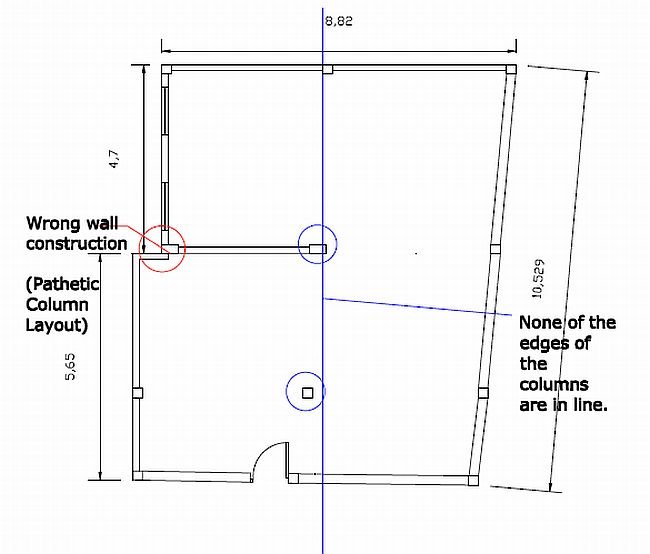Thumb rules for Structural Design | RCC Structures
I highly recommend use of advanced structural design software like ETabs or Staad Pro for design of structures. This is very important. There are so many variables in design of a structure that no minimum standards can be accurate. This guide can be used for design of very small structures, maybe up to G+1 floors. But I would still recommend use of professional software. Every structural designer should learn these software. Use of manual methods is outdated. Manual method is only used for checks. Real design is done with the help of computers, with very advanced design concepts like pushover analysis, seismic analysis, wind loads simulation and many advanced methods.
You can hire me for your structural design need. Contact me.
Design of RCC Structural Components
In this article, I will discuss the minimum standards that can be followed for the design of RCC structural components of a structure, such as columns, beams, slab and foundation. We will also discuss the minimum safe standards for the reinforcing bars that are to be used for the design of the above mentioned Structural Components.
Minimum cross-sectional dimension for a Column: is 9″x 12″ (225 MM x 300 MM) which is the minimum recommended size. I have designed hundreds of buildings, and never had the misfortune of any structural component ever failing due to loads. I always use M20 grade concrete for construction, as it is the minimum recommended grade of concrete is IS 456:2000. Please don’t skimp on the quality of concrete. The minimum steel in a 9″ x 9″ column is 4 bars of 12 MM with stirrups of 8 MM steel rings at a distance of 150 MM centre to centre. In a 9″ x 12″ column, I add two more bars, to take the total to 6 bars of 12 MM diameter. This design can be safe for up to G+1 floors. But there are a lot of other factors involved.
Also check out:
Thumb rules for making a Column Layout

Construction on Site | Design of RCC Structures[/caption]
Minimum RCC beam size should not be less than 9″x 9″ (225MM X 225MM), with an additional slab thickness of 125 MM. I generally use a minimum of 4 bars, with 2 bars of 12 MM thickness in the bottom of the beam, and 2 bars of 10 MM at the top of the beam. I maintain a concrete cover of 40 MM. I recommend use of M20 grade of concrete (1 part cement : 1.5 parts sand : 3 parts aggregate : 0.5 parts water).
Minimum thickness of RCC slab I recommend is 5″ (125MM) because a slab may contain electrical pipes embedded into them which could be 0.5″ or more for internal wiring, which effectively reduces slab depths at certain places, causing cracking, weakening and water leakage during rains. So, a minimum thickness of 5″ should be maintained.
Read more











